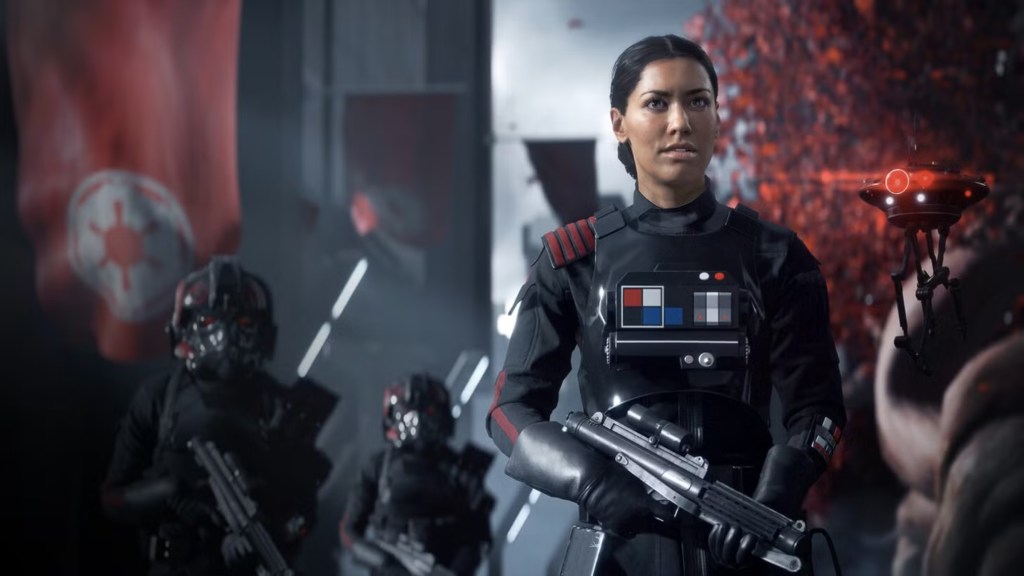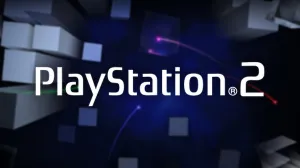Eight years ago, Star Wars: Battlefront II had a great idea for a narrative-driven Star Wars single-player campaign, but they dropped the ball. Star Wars: Battlefront II was far from the first entry in the multiplayer-heavy series, with a focus on wide-ranging battles and expansive maps. The execution of the actual gameplay and visuals was well-received, but the game suffered in many other regards — including a focus on loot boxes and microtransactions that was so pervasive, it got global government attention.
Videos by ComicBook.com
One of the other elements of the game that was heavily criticized upon release was the game’s campaign mode. Running around 6 hours, the glossy presentation of the single-player mode was undercut by a fairly predictable arc that took interesting concepts and quickly simplified them in a way that undercut their narrative potential. Almost a decade later, it still makes me sad to think about how good Battlefront II‘s campaign could have been.
Star Wars: Battlefront II Almost Had A Great Campaign Mode

Developed by DICE, Star Wars: Battlefront II works best as a multiplayer game — which is a shame, because it has a really compelling concept for a lengthier single-player campaign. Like in many multiplayer-heavy FPS titles, Star Wars Battlefront II‘s solo campaign is more or less an extended tutorial mission. The objective is to introduce players to all the different styles of combat available in the wider multiplayer mode.
As a result, the plot will make certain choices to reach certain directions where those gameplay test runs can be more included. This includes hero encounters that shift focus away from the main narrative or sudden plot twists that accommodate necessary setting changes. It’s frustrating because the story often ends up feeling perfunctory as a result, and the underlying idea at the core of the narrative is actually a really compelling concept.
The campaign for Battlefront II focuses on Iden Versio, the leader of an elite Imperial unit. The plot opens during the Battle of Endor in Return of the Jedi, with the first mission ending with the second Death Star being destroyed. Iden is initially presented as a surprisingly compelling character, a true believer in the Empire’s approach to bringing order to the galaxy by any means necessary. She’s horrified by the destruction of the Death Star and is quick to rally her squad to fight the Rebels. The daughter of a well-regarded Admiral, Iden is shaken by the Empire’s collapse and wants to continue the fight — only to discover that the remnants of the Empire intend to retake control by enacting planetary genocide across the galaxy through Operation: Cinder.
Baked into this premise is a very compelling central idea, highlighting what kind of regular person would actually believe in the Empire. It showed the Empire from a different perspective than audiences usually get to see, never forgiving them for their atrocities, while introducing a member of their army who is understandable on a human level. In theory, this could have set up a terrific 10+ hour campaign, with Iden’s actions with the remnants of the Empire gradually leading her to realize the faults of the system and turn her against them. Unfortunately, that’s not what players ultimately got.
8 Years Later, I Still Wish Battlefront II’s Campaign Had Been Better

Iden is one of the rare characters in the Star Wars franchise who aligns with the villainous organization but doesn’t come across like a heartless murderer or a cold commander. She’s got fury, almost justifiable anger over the sheer number of deaths the Empire has suffered in the conflict with the Rebels. She has no reason to see the Rebels as anything less than terrorists, seeking to unseat their power and reintroduce chaos to a galaxy that just decades ago was torn apart by the Clone Wars and the collapse of the Jedi Order.
She’s a compelling lead character whose arc reflects a franchise-wide theme about redemption while offering a unique perspective on someone effectively deprograming themselves from the insidious manipulations of the society they were raised within. The problem is, this genuinely compelling concept is quickly undermined by Iden and her fellow squad member/love interest Del’s quick defection to the Rebels.
It’s only a few missions into the campaign that the pair witness the full scope of Operation: Cinder, which horrifies them enough to join the Rebels. It’s the expected arc of the narrative given the franchise around it. I’m not even complaining about that being the overall throughline of the plot.
However, I was distinctly disappointed when the potentially compelling long arc of seeing a true Imperial believer reluctantly see the light was so quickly resolved. It could have been a complex look at the benefits of the Empire and the faults of the Rebels, gradually building to the discovery that security is not worth the cost the Empire is willing to pay. Instead, within a handful of missions, the narrative hits the standard black and white morality of the franchise. Iden’s swap over to the Rebels is far too quick and far too easy, setting up the standard “Rebels vs. Empire” concept that has dominated the franchise.
Battlefront II‘s plot could have been so much more, a genuine effort to subvert easy expectations about morality in war. It could have seen a true believer develop doubt amid the society she has always known, instead of having her all of a sudden realize just how bad the Empire is. Instead, the shift to the Rebels gives players more excuses to try out ships, heroes, and other elements of the multiplayer experience — and a more basic story arc.
I’m convinced there was a way to do everything DICE was trying to accomplish with the campaign without sacrificing the slow-burning strength of Iden’s arc. Maybe Del could have swapped sides at first, and Iden could have only gradually seen his point during the continuing conflicts. Maybe she could have spent more time bouncing off of her father and her more dogmatic squadmates, her dedication to doing the right thing increasingly going against the desperate and dangerous remnants of the Empire. Maybe there could have even been a section of the campaign where Iden went undercover as a defector, opening up the Rebel forces to the player while keeping the narrative focus on her growth.
Iden’s development from an Imperial commando to a Rebel soldier is a great idea, and with the right amount of depth, could have been a terrific addition to the overarching Star Wars franchise. A full campaign fully dedicated to that arc, one that didn’t hop to other characters or shift focus away from her, would have made Battlefront II a must-play even for gamers who weren’t interested in the multiplayer options. Instead, it’s a compelling idea that falls into predictability too easily.








